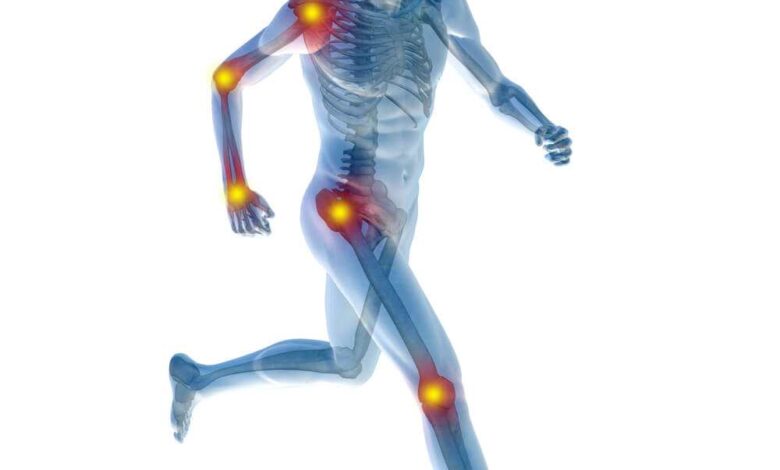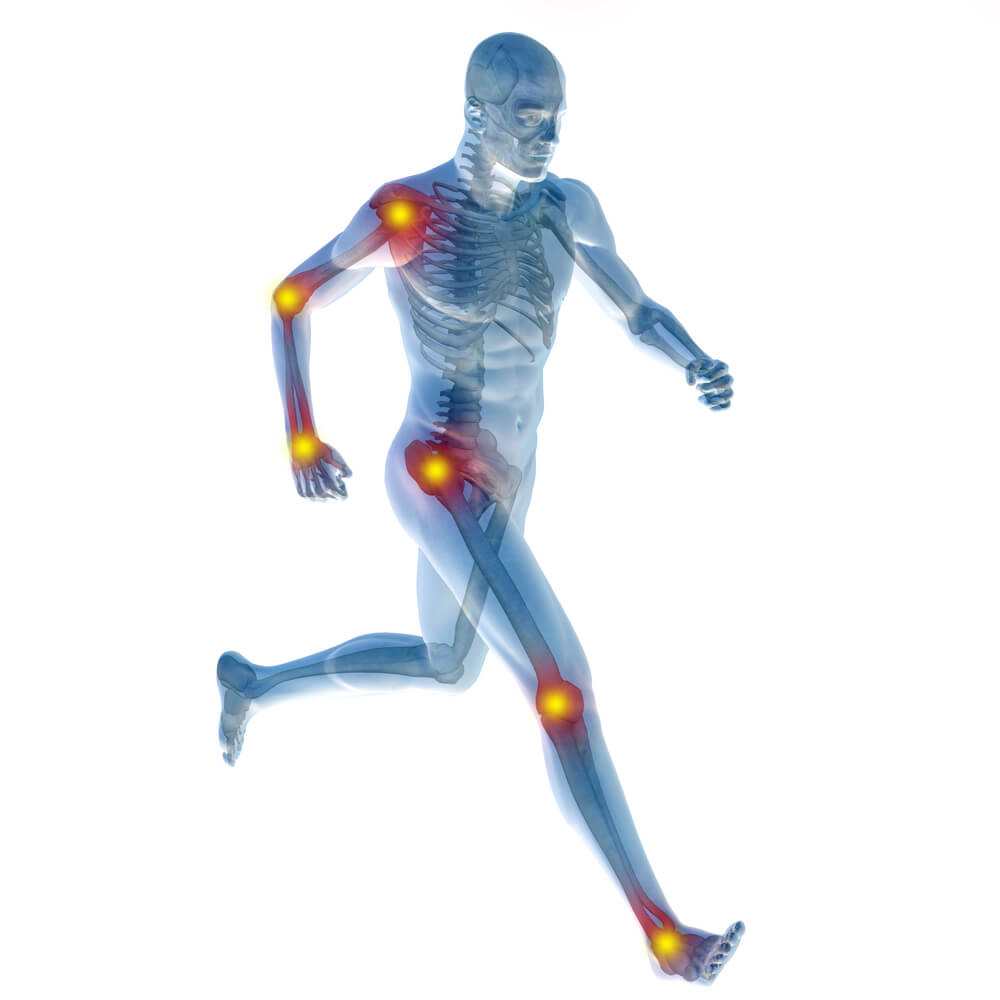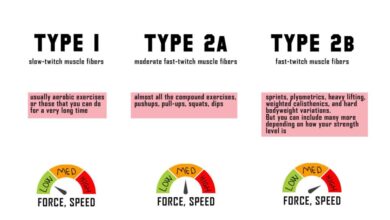
A Beginners Guide to Joint Health: Understanding, Maintaining, and Protecting Your Joints
A beginners guide to joint health – A Beginner’s Guide to Joint Health: Understanding, Maintaining, and Protecting Your Joints. Our joints are the amazing connectors that allow us to move, play, and live our lives to the fullest. But, like any part of our bodies, they need care and attention to stay healthy and strong.
This guide is designed to help you understand how joints work, what factors can affect their health, and how you can take proactive steps to keep them functioning optimally for years to come. Whether you’re experiencing joint pain, stiffness, or simply want to learn how to protect your joints, this guide will provide you with valuable information and actionable tips.
From the anatomy of joints and common problems to exercise recommendations, dietary advice, and tips for managing pain, we’ll explore the key aspects of maintaining healthy joints. Understanding the connection between lifestyle choices, genetics, and joint health is crucial.
We’ll discuss the role of exercise, diet, and weight management in protecting your joints. We’ll also explore the importance of early intervention and preventative measures to reduce the risk of developing joint problems.
Understanding Joint Health: A Beginners Guide To Joint Health

Our joints are the remarkable structures that allow us to move, bend, and rotate our bodies. They connect our bones and enable a wide range of activities, from simple everyday tasks to strenuous athletic endeavors. Understanding the anatomy and function of joints is crucial for maintaining optimal health and mobility throughout life.
Joint Anatomy and Function
Joints are complex structures composed of various tissues, including bone, cartilage, ligaments, tendons, and synovial fluid.
- Bonesprovide the framework for our bodies and support our weight. They are connected at joints, forming the points of articulation.
- Cartilageis a smooth, resilient tissue that covers the ends of bones at joints. It acts as a shock absorber, reducing friction during movement and preventing wear and tear.
- Ligamentsare strong, fibrous tissues that connect bones to each other. They provide stability and limit excessive movement at joints.
- Tendonsare tough, fibrous tissues that connect muscles to bones. They transmit the force generated by muscles to move the bones at joints.
- Synovial fluidis a viscous fluid that lubricates the joint surfaces, reducing friction and allowing smooth movement.
Types of Joints
Joints can be classified into different types based on their structure and range of motion.
- Fibrous Joints: These joints are immovable or slightly movable, held together by fibrous connective tissue. Examples include the sutures of the skull.
- Cartilaginous Joints: These joints are slightly movable, with cartilage connecting the bones. Examples include the intervertebral discs in the spine.
- Synovial Joints: These joints are freely movable, characterized by a joint capsule filled with synovial fluid. Examples include the knee, shoulder, and hip joints.
Common Joint Problems
Various factors can contribute to joint problems, including injury, overuse, aging, and underlying medical conditions.
- Osteoarthritisis a degenerative joint disease that causes cartilage breakdown, leading to pain, stiffness, and reduced mobility. It is often associated with aging, but can also occur due to injury or overuse.
- Rheumatoid Arthritisis an autoimmune disease that causes inflammation of the joints, leading to pain, swelling, and stiffness. It can affect multiple joints throughout the body.
- Goutis a type of arthritis caused by a buildup of uric acid crystals in the joints, leading to sudden, severe pain and inflammation. It often affects the big toe.
- Bursitisis an inflammation of the fluid-filled sacs (bursae) that cushion joints. It can be caused by injury, overuse, or infection.
- Tendonitisis an inflammation of a tendon, often caused by overuse or repetitive strain.
Maintaining Healthy Joints
Maintaining healthy joints throughout life is crucial for preserving mobility and independence.
- Regular Exercise: Engaging in regular physical activity strengthens muscles and improves joint stability. Low-impact exercises like swimming, cycling, and walking are ideal for joint health.
- Healthy Weight: Excess weight puts extra stress on joints, especially weight-bearing joints like the knees and hips. Maintaining a healthy weight can reduce joint stress and improve overall health.
- Proper Nutrition: Consuming a balanced diet rich in fruits, vegetables, and whole grains provides essential nutrients for joint health.
- Avoid Smoking: Smoking can damage cartilage and reduce blood flow to joints, increasing the risk of joint problems.
- Good Posture: Maintaining good posture helps to distribute weight evenly across joints, reducing stress and strain.
Factors Affecting Joint Health
Your joints are complex structures that allow you to move, bend, and twist. They’re made up of bones, cartilage, ligaments, and tendons, all working together to provide support and flexibility. Maintaining good joint health is essential for overall well-being, enabling you to stay active and enjoy life to the fullest.
However, several factors can affect your joint health, both within your control and beyond.
Lifestyle Factors
Lifestyle choices significantly impact joint health. Making healthy choices can help protect your joints and prevent future problems.
- Diet: A balanced diet rich in fruits, vegetables, and lean protein provides essential nutrients for joint health. These nutrients include vitamin C for cartilage formation, vitamin D for calcium absorption, and omega-3 fatty acids for reducing inflammation. Conversely, a diet high in processed foods, saturated fats, and sugar can contribute to inflammation and weight gain, putting extra stress on your joints.
- Exercise: Regular physical activity is crucial for maintaining healthy joints. Exercise strengthens muscles surrounding your joints, improves flexibility, and promotes blood flow, delivering nutrients to cartilage. However, it’s important to choose low-impact exercises that don’t put excessive stress on your joints.
Examples include swimming, cycling, and walking. On the other hand, high-impact activities like running or jumping can increase the risk of joint injuries, especially if you’re overweight or have existing joint problems.
- Weight Management: Excess weight puts extra stress on your joints, particularly your knees, hips, and ankles. Losing even a small amount of weight can significantly reduce the strain on your joints and decrease your risk of developing osteoarthritis and other joint problems.
A beginner’s guide to joint health is all about making smart choices, and that includes your diet! Summer is a great time to focus on fresh, seasonal foods, and incorporating these into your meals can help keep your joints happy and healthy.
Check out these healthy eating tips for summer to keep in track to find out how to fuel your body with the nutrients it needs for strong, pain-free joints.
Genetics and Age
While lifestyle factors play a significant role, genetics and age also contribute to joint health.
- Genetics: Some people are genetically predisposed to developing certain joint conditions, such as osteoarthritis or rheumatoid arthritis. Family history of these conditions can increase your risk.
- Age: As we age, our cartilage naturally wears down, making our joints more susceptible to pain and stiffness. This process can be accelerated by factors like injuries and overuse.
Injuries and Overuse
Joint injuries, whether acute or chronic, can significantly impact joint health.
- Acute Injuries: Sudden injuries, such as sprains, strains, and fractures, can damage the ligaments, tendons, and cartilage surrounding your joints. These injuries can lead to long-term pain, stiffness, and instability. Prompt medical attention and proper rehabilitation are crucial for a full recovery.
- Overuse: Repetitive motions or excessive use of certain joints can lead to wear and tear, increasing the risk of developing conditions like tendonitis or osteoarthritis. For example, athletes who engage in high-impact sports or individuals who perform repetitive tasks at work are at a higher risk of developing overuse injuries.
Chronic Conditions
Certain chronic conditions can significantly affect joint health, often causing pain, inflammation, and limited mobility.
- Arthritis: A group of conditions that cause inflammation of the joints, leading to pain, stiffness, and swelling. There are different types of arthritis, including osteoarthritis, rheumatoid arthritis, and gout, each with its unique characteristics and treatment options.
Arthritis can affect any joint in the body but commonly affects the hands, knees, hips, and spine.
Maintaining Healthy Joints
Maintaining healthy joints is crucial for overall well-being, enabling you to move freely and participate in activities you enjoy. By adopting a holistic approach that encompasses exercise, nutrition, and lifestyle modifications, you can significantly improve joint health and minimize the risk of pain and stiffness.
Exercises for Joint Health
Regular exercise plays a vital role in maintaining healthy joints. It strengthens muscles, improves flexibility, and lubricates joints. However, it’s essential to choose exercises that are appropriate for your fitness level and joint condition.
- Low-impact exercisesare ideal for individuals with joint pain or limited mobility. These exercises put minimal stress on joints, making them suitable for most people. Examples include:
- Walking: A simple and effective low-impact exercise that can be done at any pace and for any duration.
Walking strengthens muscles, improves cardiovascular health, and increases bone density.
- Swimming: Water provides buoyancy, reducing stress on joints while providing a full-body workout. Swimming is particularly beneficial for people with arthritis as it offers a low-impact, high-resistance exercise.
- Cycling: Stationary or outdoor cycling is another excellent low-impact option that strengthens lower body muscles and improves cardiovascular fitness.
- Yoga: This practice combines stretching, strengthening, and mindfulness, promoting flexibility, balance, and relaxation. Yoga poses can be modified to suit individual needs and abilities.
- Walking: A simple and effective low-impact exercise that can be done at any pace and for any duration.
- Strength trainingis crucial for building muscle mass, which supports joints and reduces stress. Strength training exercises can be done with weights, resistance bands, or your own body weight. Examples include:
- Squats: Work the quadriceps, hamstrings, and glutes, strengthening the muscles around the hips and knees.
A beginner’s guide to joint health often emphasizes nutrition, and this delicious 250 calorie chicken cauliflower fried rice recipe is a great example of a meal that can be both satisfying and healthy. By incorporating lean protein and plenty of vegetables, this recipe helps support joint health while providing a tasty and fulfilling meal.
- Lunges: Target the quadriceps, hamstrings, and glutes, improving balance and coordination.
- Push-ups: Strengthen the chest, shoulders, and triceps, improving upper body strength and stability.
- Rows: Work the back muscles, improving posture and reducing strain on the spine.
- Squats: Work the quadriceps, hamstrings, and glutes, strengthening the muscles around the hips and knees.
Nutritional Considerations
A balanced diet rich in essential nutrients can significantly contribute to joint health.
- Omega-3 fatty acids, found in fatty fish like salmon, tuna, and mackerel, have anti-inflammatory properties that can reduce joint pain and stiffness.
- Vitamin D, essential for calcium absorption and bone health, can be obtained from sunlight exposure, fortified foods, and supplements.
- Glucosamine and chondroitinare naturally occurring compounds that support cartilage health. They are available as supplements and can be found in some foods like shellfish and bone broth.
- Antioxidants, found in fruits, vegetables, and whole grains, protect cells from damage caused by free radicals, which can contribute to joint inflammation.
Maintaining a Healthy Weight
Excess weight puts additional stress on joints, particularly the knees, hips, and ankles. Losing even a small amount of weight can significantly reduce joint pain and improve mobility.
- Calorie control: Aim to consume fewer calories than you burn to create a calorie deficit, leading to weight loss.
- Regular exercise: Physical activity helps burn calories and build muscle mass, which boosts metabolism and supports weight loss.
- Portion control: Be mindful of portion sizes and avoid overeating.
- Healthy food choices: Choose nutrient-dense foods over processed and sugary options.
Posture and Ergonomics
Proper posture and ergonomics are crucial for protecting joints from unnecessary strain.
A beginner’s guide to joint health is all about understanding how to nourish your body from the inside out. A great way to do this is by incorporating nutrient-rich foods into your diet, like the vibrant and flavorful vegan super greens tomatillo posole.
This dish is packed with antioxidants and essential vitamins, which can contribute to maintaining healthy joints and reducing inflammation. So, take a step towards better joint health by exploring delicious and nutritious vegan options!
- Maintain good posturewhen sitting, standing, and walking. Avoid slouching or hunching, as this can put pressure on the spine and neck.
- Use ergonomic chairs and desksthat provide proper support for the back and neck.
- Take frequent breaksto stretch and move around, especially if you work at a desk for extended periods.
- Lift objects correctlyby bending your knees and keeping your back straight. Avoid lifting heavy objects with your back alone.
Addressing Joint Pain and Stiffness
Joint pain and stiffness are common problems that can affect people of all ages. These symptoms can significantly impact your quality of life, making it difficult to perform everyday activities. Understanding the causes, symptoms, and treatment options for joint pain and stiffness is crucial for managing these conditions effectively.
Understanding Common Symptoms
Joint pain and stiffness can be caused by various factors, including injury, overuse, and underlying medical conditions such as arthritis. Recognizing the common symptoms is essential for seeking timely medical attention.
- Pain:Joint pain can range from mild discomfort to severe, debilitating pain. It may be localized to a specific joint or spread to surrounding areas.
- Stiffness:Stiffness refers to a feeling of tightness or restricted movement in a joint. It is often more pronounced in the morning or after periods of inactivity.
- Swelling:Swelling around a joint can be caused by inflammation, fluid buildup, or other factors. It may be accompanied by redness, warmth, and tenderness.
- Limited Range of Motion:Joint pain and stiffness can restrict the ability to move a joint through its full range of motion.
Treatment Options for Joint Pain and Stiffness
Treatment for joint pain and stiffness depends on the underlying cause and severity of symptoms. Several treatment options are available, including:
- Over-the-Counter Medications:Nonsteroidal anti-inflammatory drugs (NSAIDs) such as ibuprofen and naproxen can help reduce pain and inflammation. Acetaminophen can also be used for pain relief.
- Physical Therapy:Physical therapists can teach exercises and stretches to improve joint flexibility, strength, and range of motion. They may also use modalities such as heat or cold therapy to reduce pain and inflammation.
- Surgery:In some cases, surgery may be necessary to repair damaged joints or replace worn-out joints. This is typically considered when other treatment options have failed.
Different Types of Arthritis and Their Treatments, A beginners guide to joint health
Arthritis is a common cause of joint pain and stiffness. Different types of arthritis have distinct characteristics and treatment approaches. The table below summarizes some common types of arthritis and their treatments:
| Type of Arthritis | Description | Treatments |
|---|---|---|
| Osteoarthritis | Wear and tear on joint cartilage, leading to pain, stiffness, and swelling. | Pain relievers, physical therapy, joint replacement surgery. |
| Rheumatoid Arthritis | Autoimmune disorder that attacks the lining of joints, causing inflammation, pain, and stiffness. | Disease-modifying antirheumatic drugs (DMARDs), corticosteroids, biologics. |
| Gout | A type of arthritis caused by a buildup of uric acid crystals in the joints. | Medications to lower uric acid levels, pain relievers, corticosteroids. |
Managing Joint Pain and Stiffness at Home
Several home remedies can help manage joint pain and stiffness. These include:
- Heat Therapy:Applying heat to the affected joint can help relax muscles and reduce stiffness. Use a heating pad, warm compress, or soak in a warm bath.
- Cold Therapy:Applying cold to the affected joint can help reduce inflammation and pain. Use an ice pack or cold compress for 15-20 minutes at a time.
- Relaxation Techniques:Stress can worsen joint pain. Practicing relaxation techniques such as deep breathing, meditation, or yoga can help reduce stress and improve overall well-being.
- Weight Management:Excess weight can put extra stress on joints. Losing even a small amount of weight can help reduce joint pain and stiffness.
- Ergonomics:Proper posture and body mechanics can help prevent further injury and reduce pain. Make sure your work environment is ergonomically sound and avoid repetitive movements.
Prevention and Early Intervention
While we’ve explored the factors that contribute to joint health and ways to maintain them, proactive steps are crucial to prevent joint problems or manage them effectively in their early stages. Prevention and early intervention are key to preserving joint function and improving long-term well-being.
Preventing Joint Problems
Adopting a preventative approach can significantly reduce your risk of developing joint issues. Here are some key measures to consider:
- Regular Exercise:Engaging in regular physical activity, particularly weight-bearing exercises and activities that improve flexibility and strength, can help maintain healthy joints. Aim for at least 150 minutes of moderate-intensity aerobic activity or 75 minutes of vigorous-intensity aerobic activity per week, along with strength training exercises at least twice a week.
- Balanced Diet:A diet rich in fruits, vegetables, whole grains, and lean protein provides essential nutrients for joint health. These nutrients include calcium, vitamin D, and omega-3 fatty acids, which support bone health and reduce inflammation. Limit processed foods, sugary drinks, and saturated and trans fats, which can contribute to inflammation and joint pain.
- Maintaining a Healthy Weight:Excess weight puts additional stress on joints, particularly the knees, hips, and ankles. Maintaining a healthy weight through a balanced diet and regular exercise can significantly reduce this stress and prevent joint problems.
- Avoiding Overuse:Repetitive motions or excessive strain on joints can lead to wear and tear. Ensure you use proper form during activities and take breaks to avoid overexertion. Consider using assistive devices, such as knee pads or back braces, when performing tasks that put stress on joints.
- Good Posture:Proper posture helps distribute weight evenly across joints, reducing stress and strain. Pay attention to your posture when standing, sitting, and lifting objects to minimize the risk of joint problems.
- Protecting Joints from Injury:Accidents and injuries can cause significant damage to joints. Take precautions when engaging in activities that pose a risk of injury, such as sports or using power tools. Wear protective gear, such as helmets and knee pads, when appropriate.
Importance of Early Intervention
Early intervention is crucial for managing joint pain and stiffness. Delaying treatment can lead to worsening pain, decreased mobility, and increased risk of long-term joint damage. Early detection and treatment allow for more effective management and can help prevent the need for more invasive interventions later on.
Seeking Professional Help
If you experience persistent joint pain, stiffness, or swelling, consult a healthcare professional. They can help diagnose the underlying cause, recommend appropriate treatment options, and prevent further damage to your joints. Early diagnosis and treatment can often prevent the progression of joint problems and improve your overall quality of life.
Resources and Support Groups
Several resources and support groups are available for individuals with joint problems. These resources can provide information, support, and guidance on managing joint pain and stiffness. Examples include:
- The Arthritis Foundation:This organization offers comprehensive resources, including information about arthritis, treatment options, support groups, and advocacy efforts.
- The National Institutes of Health (NIH):The NIH website provides detailed information about various joint conditions, research updates, and clinical trials.
- Local Support Groups:Many communities offer support groups for individuals with joint problems. These groups provide a safe space to share experiences, connect with others, and learn coping strategies.
Last Recap
Taking care of your joints is an investment in your overall health and well-being. By understanding the factors that influence joint health and adopting proactive strategies, you can empower yourself to maintain optimal joint function and mobility. Remember, it’s never too late to prioritize your joint health.
Whether you’re just starting your journey to better joint health or seeking ways to manage existing problems, this guide will provide you with the knowledge and tools you need to live a more active and pain-free life. So, let’s embark on this journey together, one step at a time.






